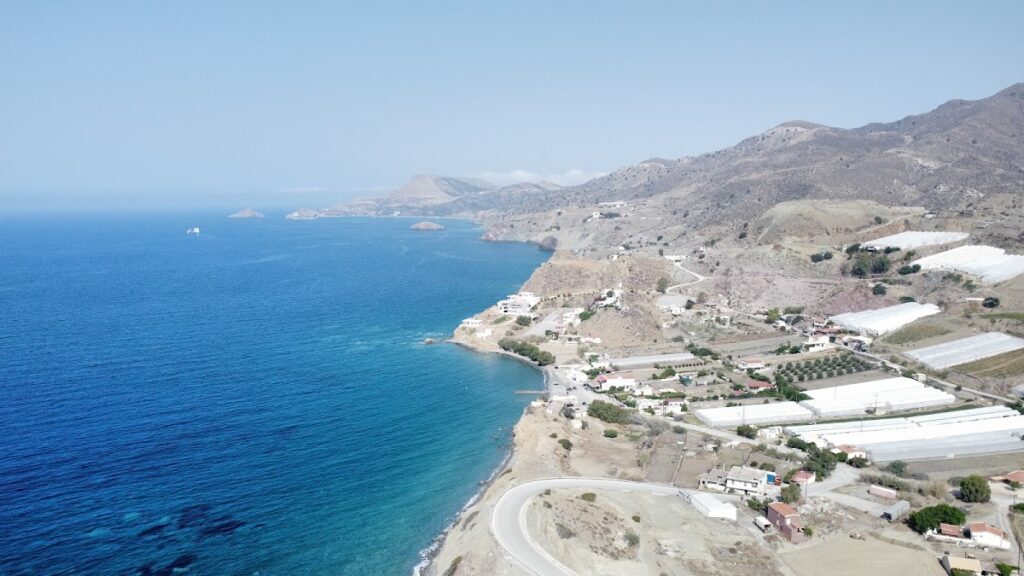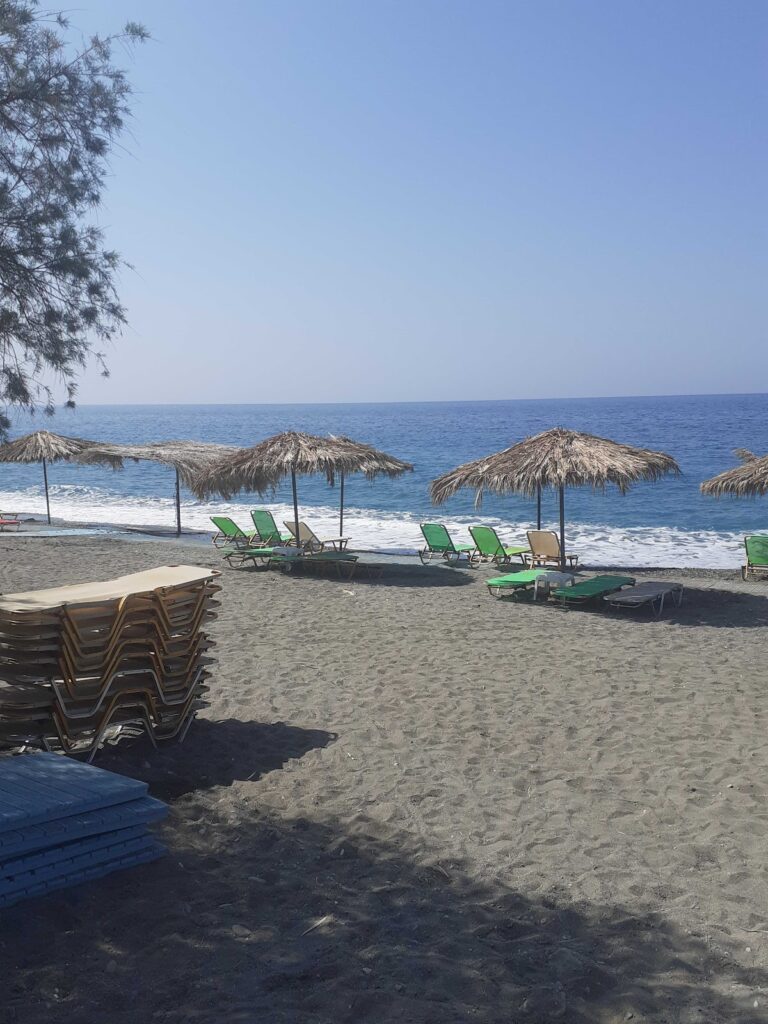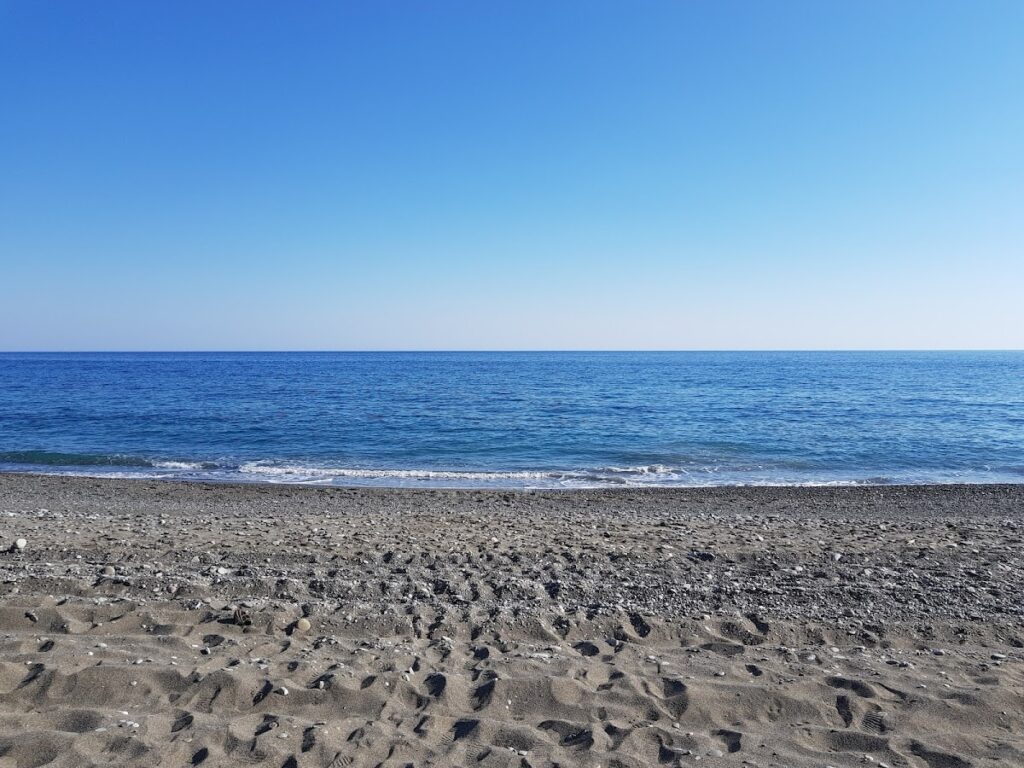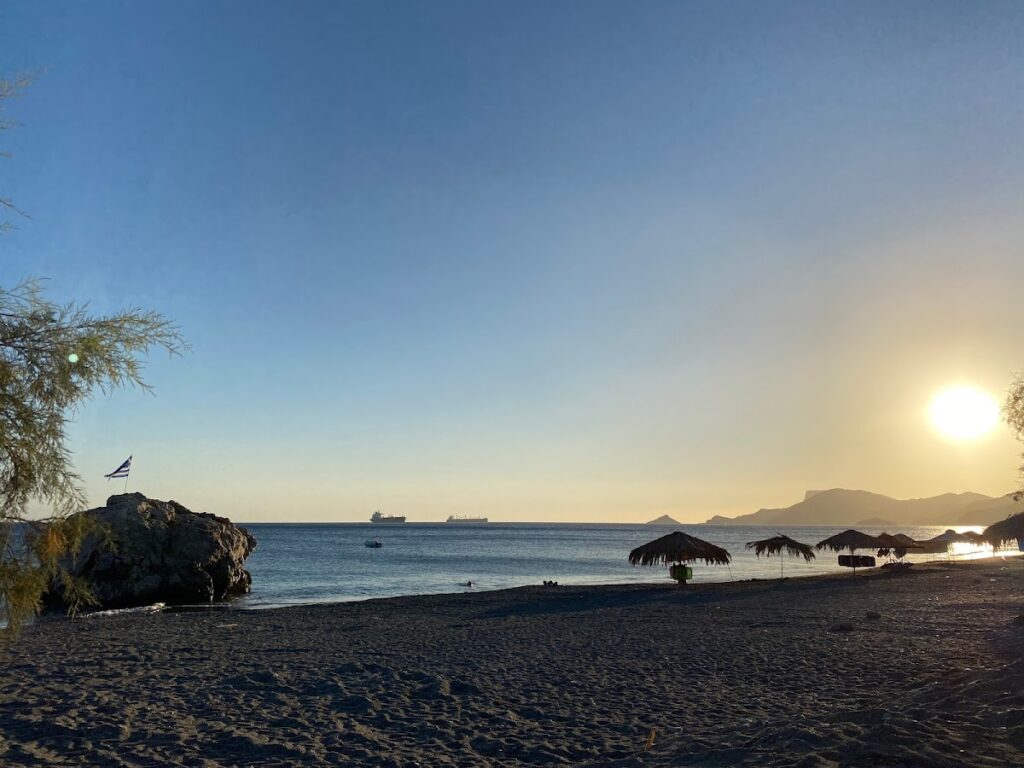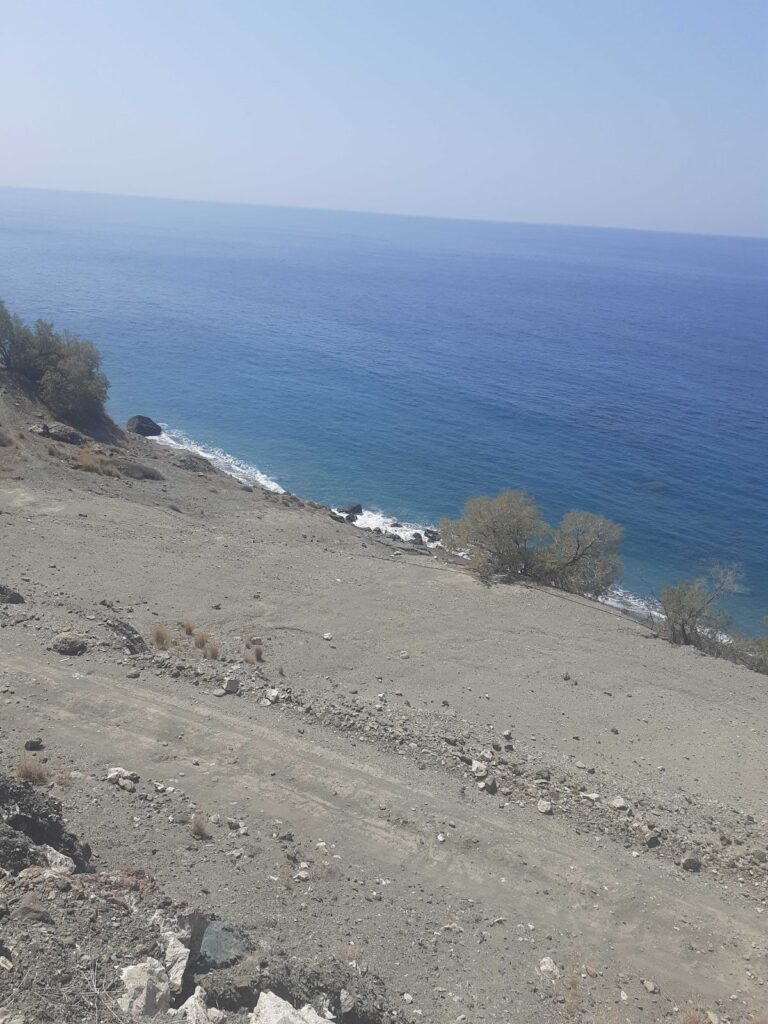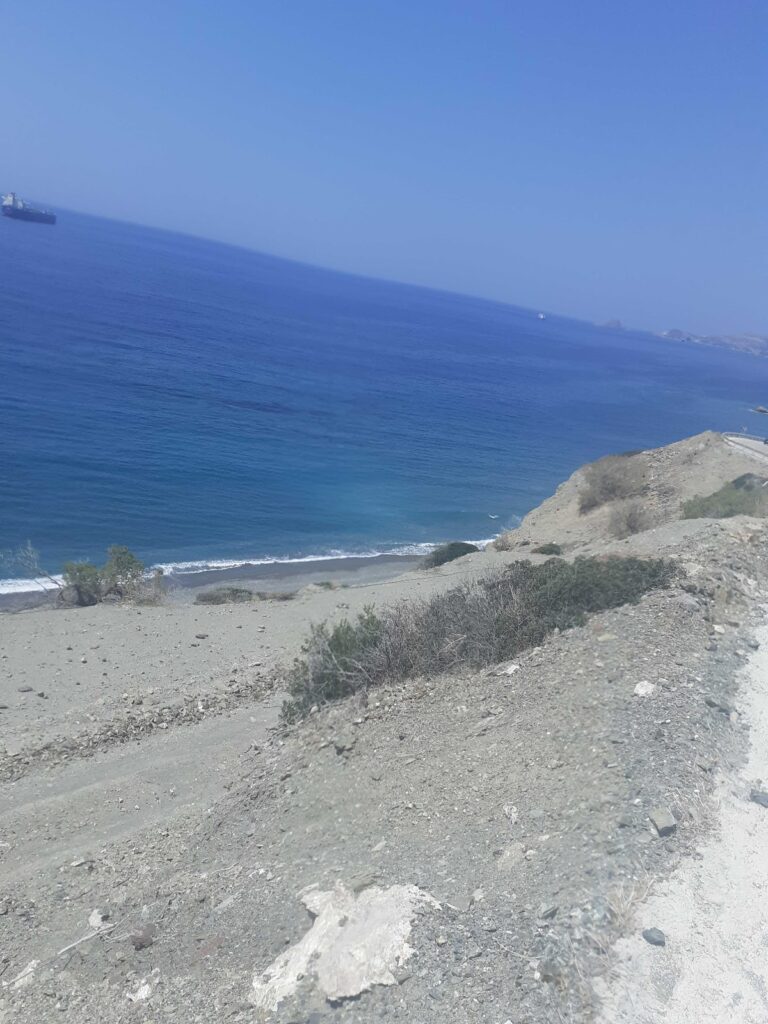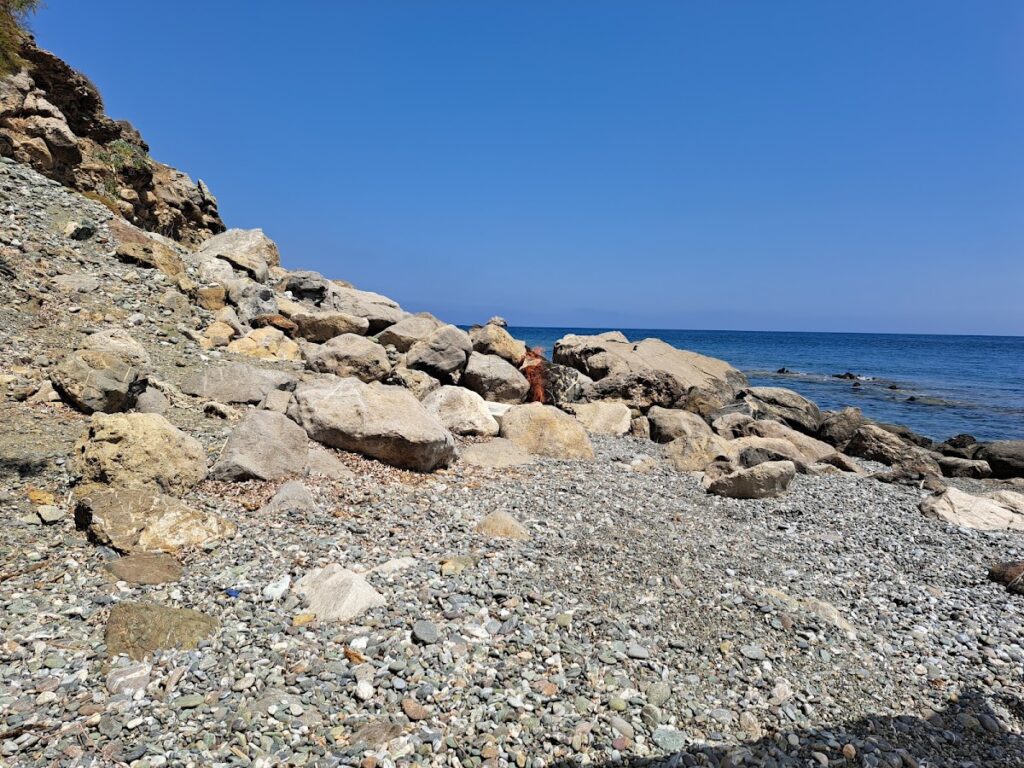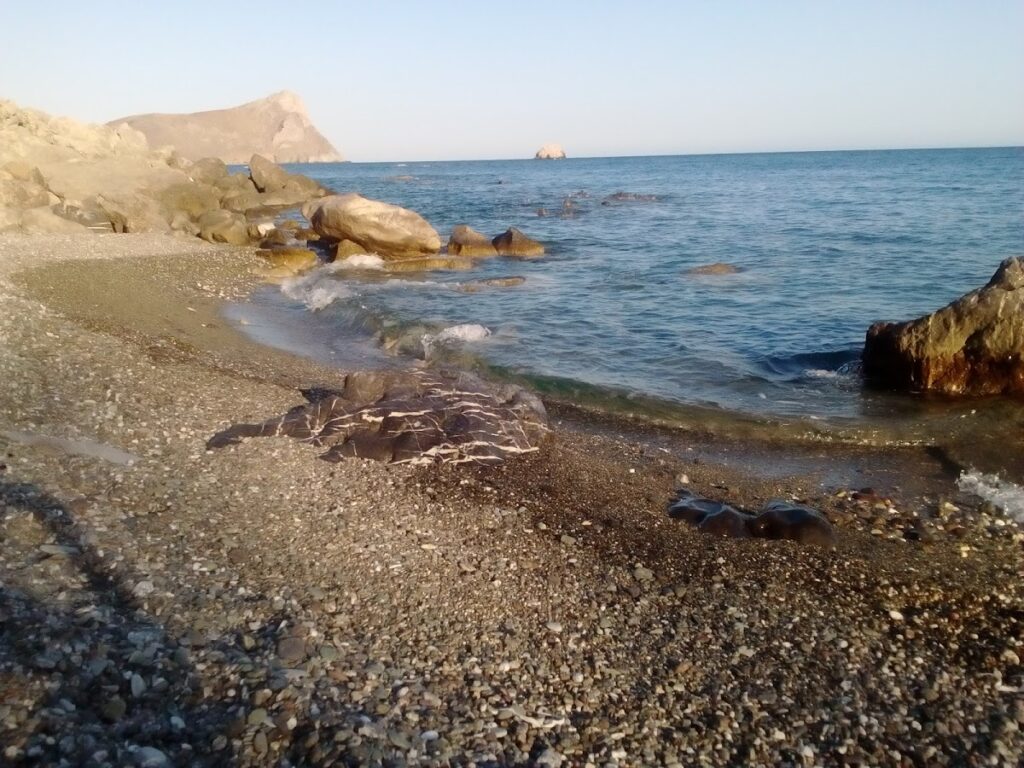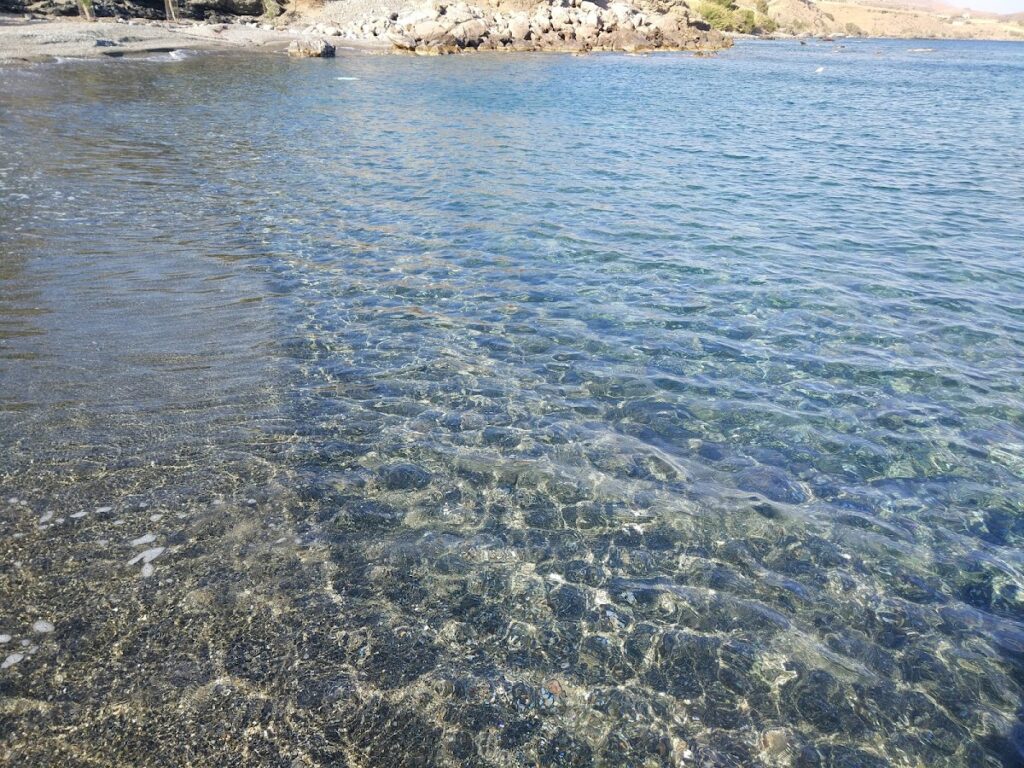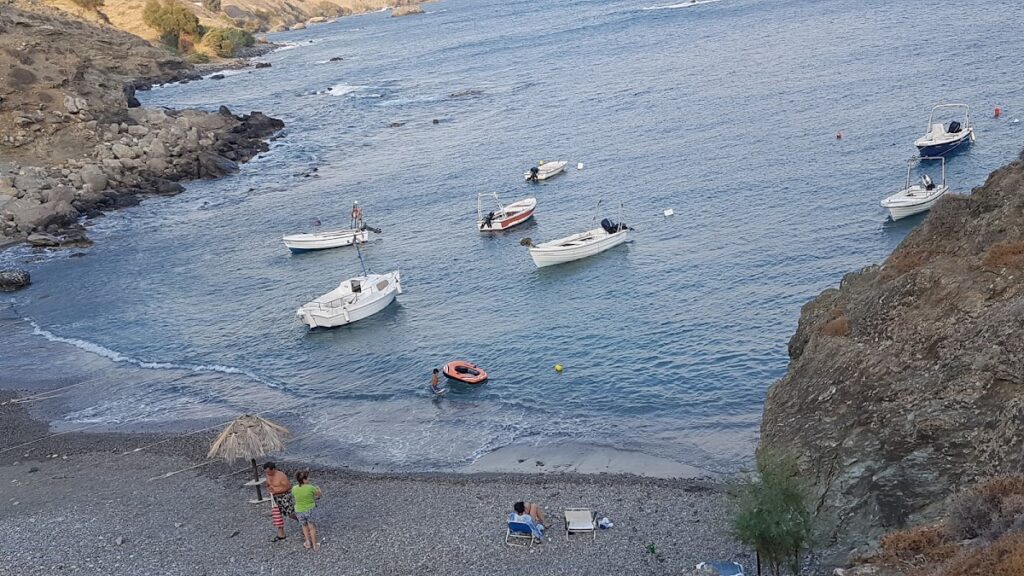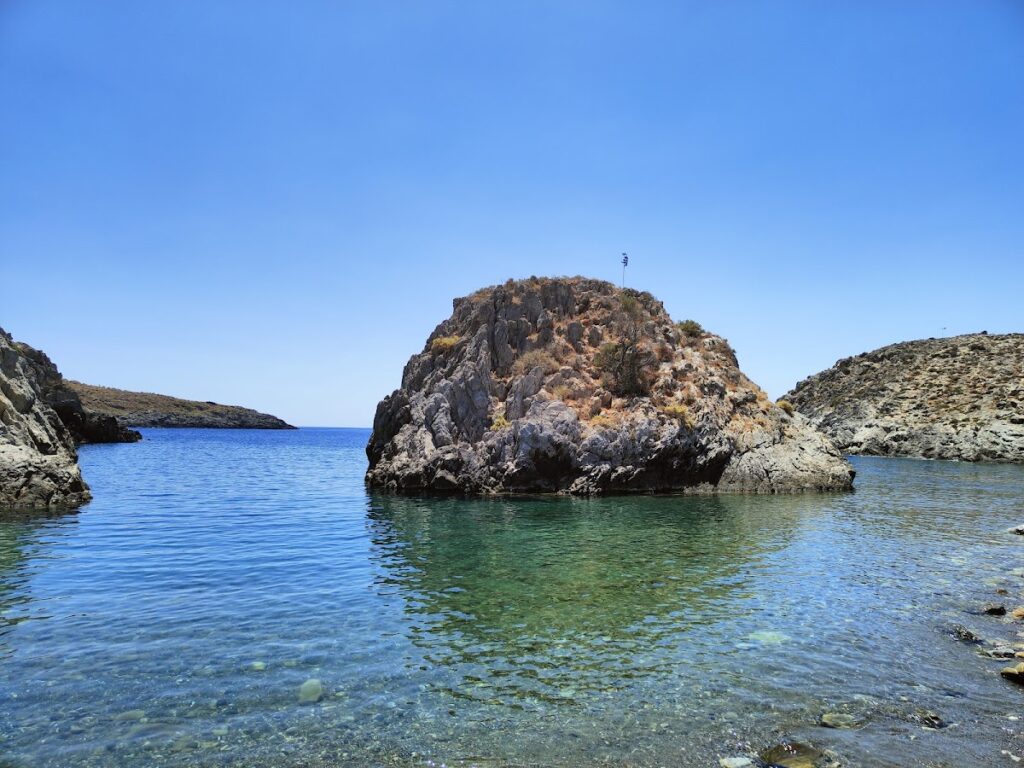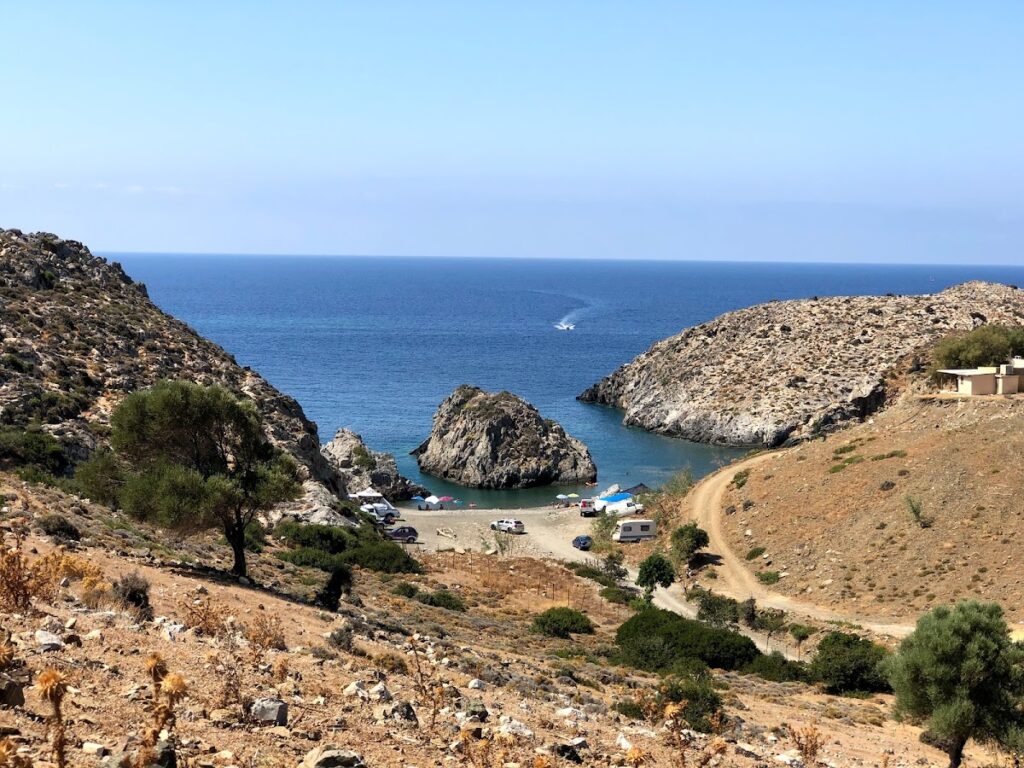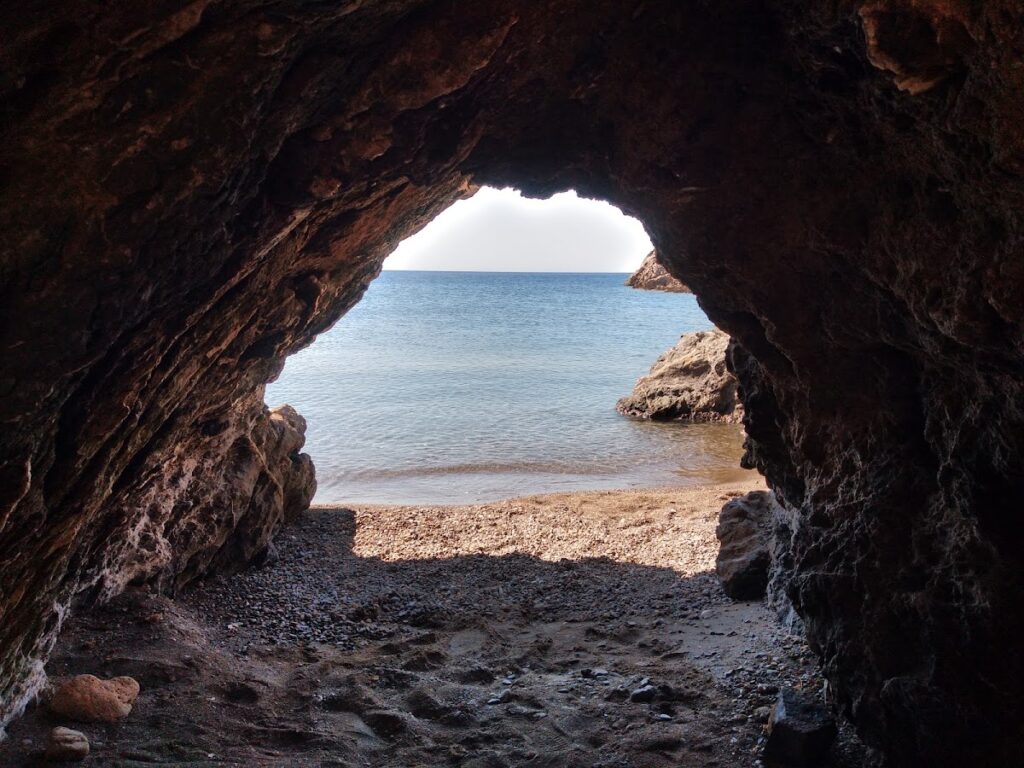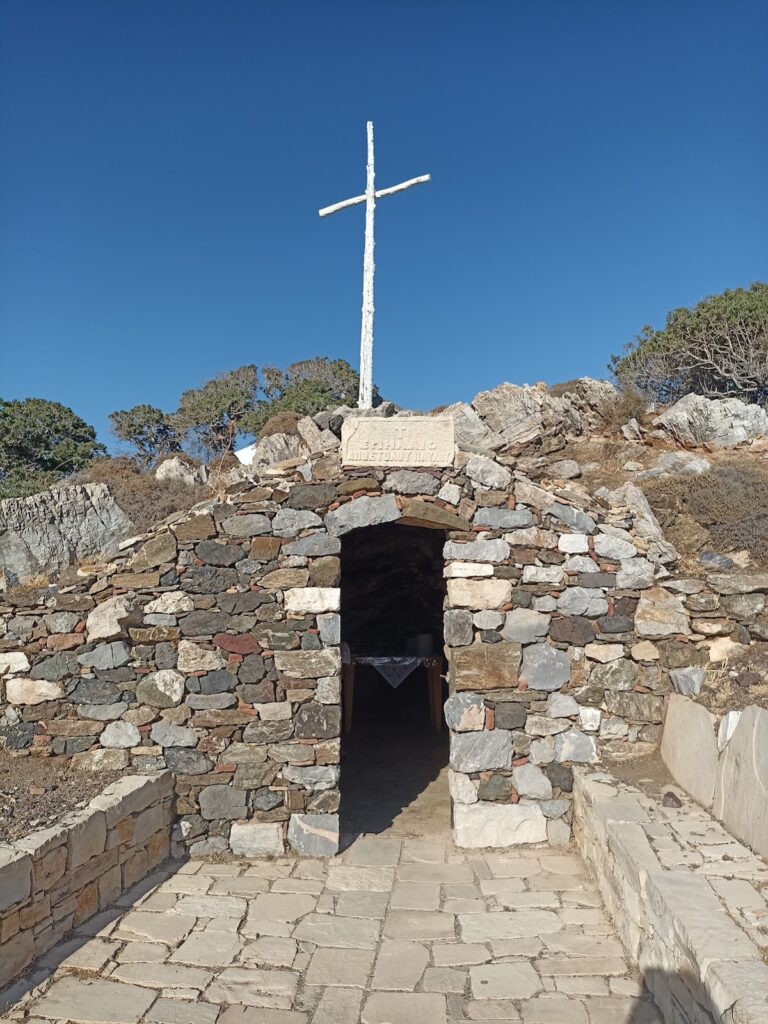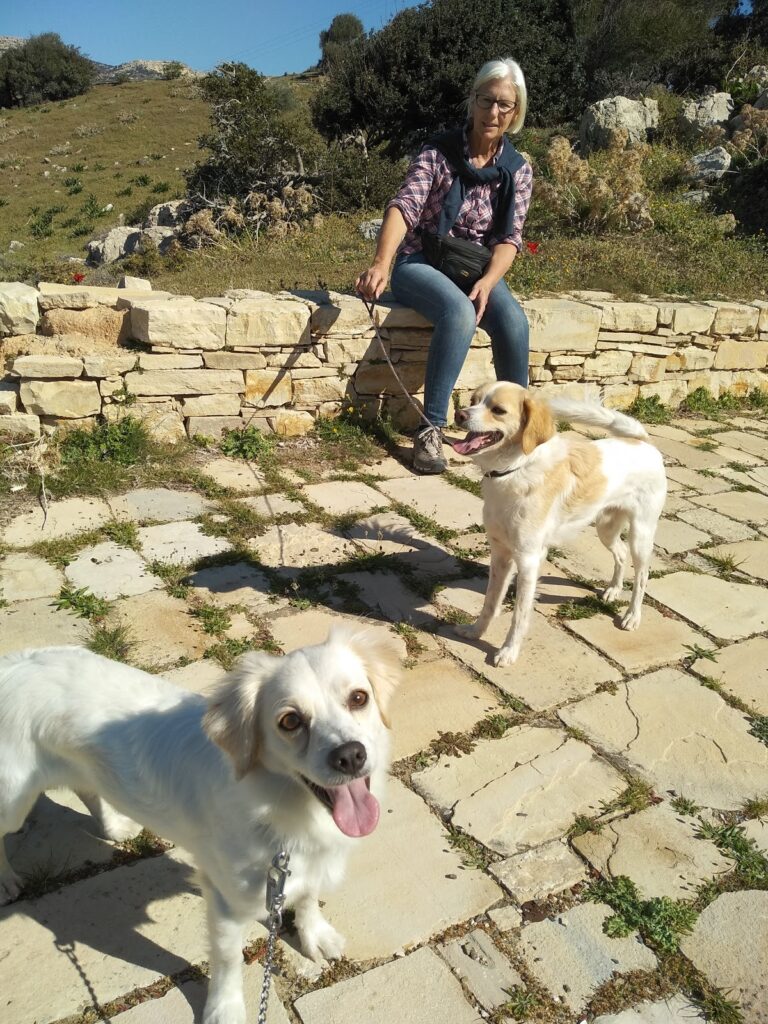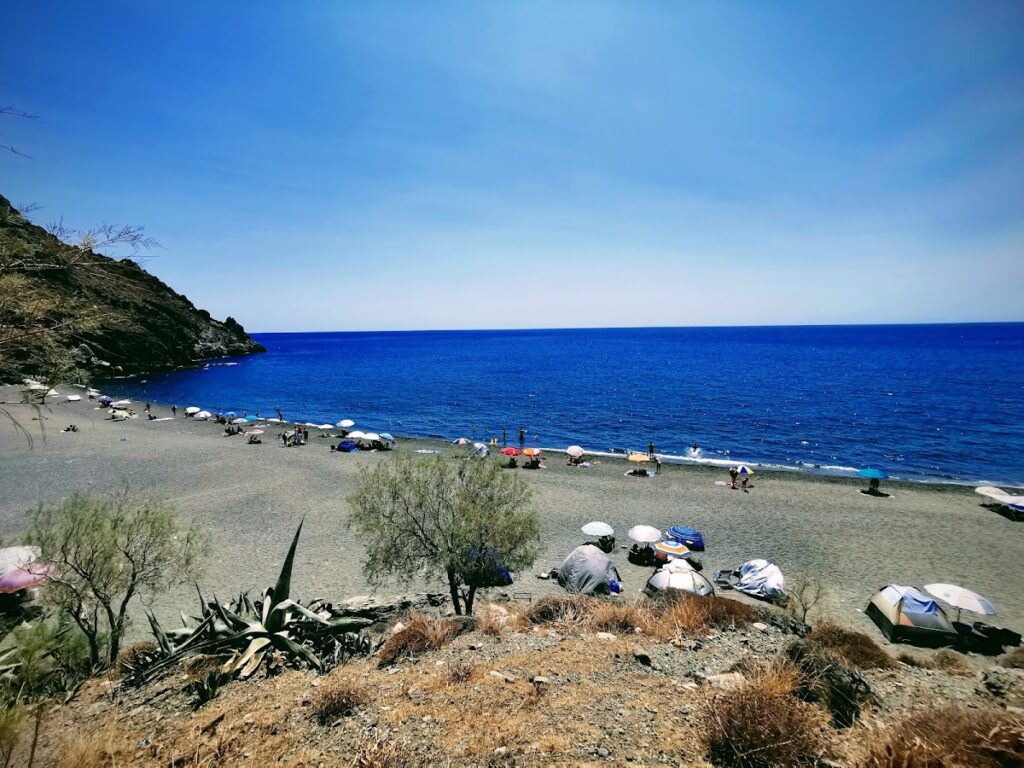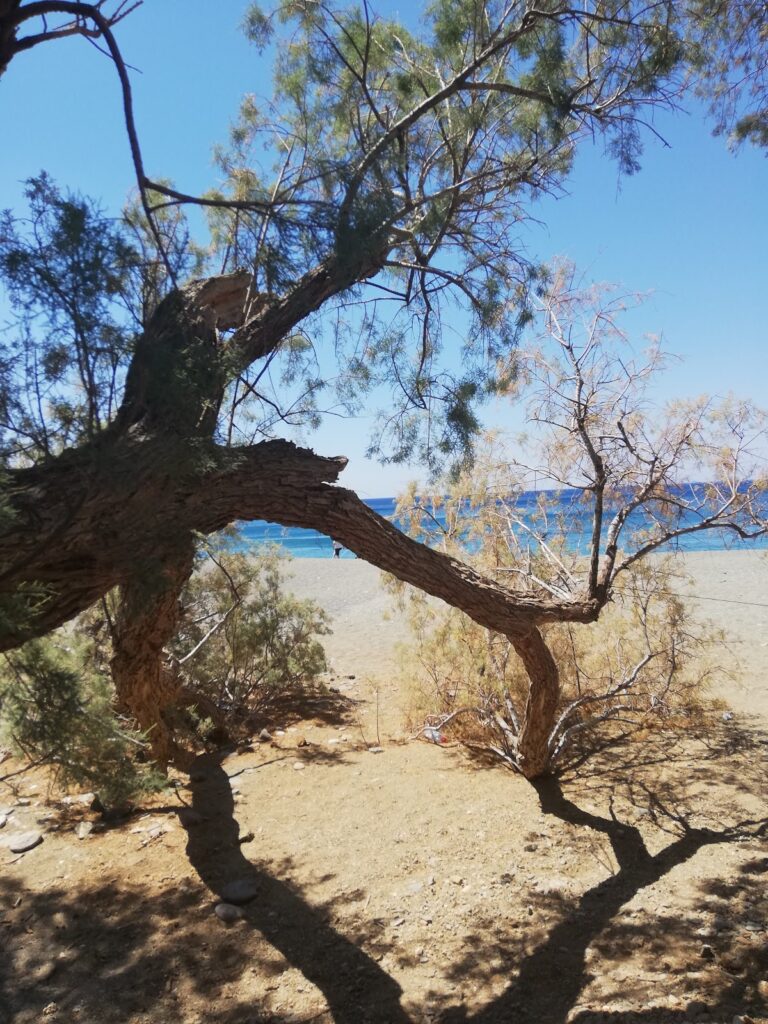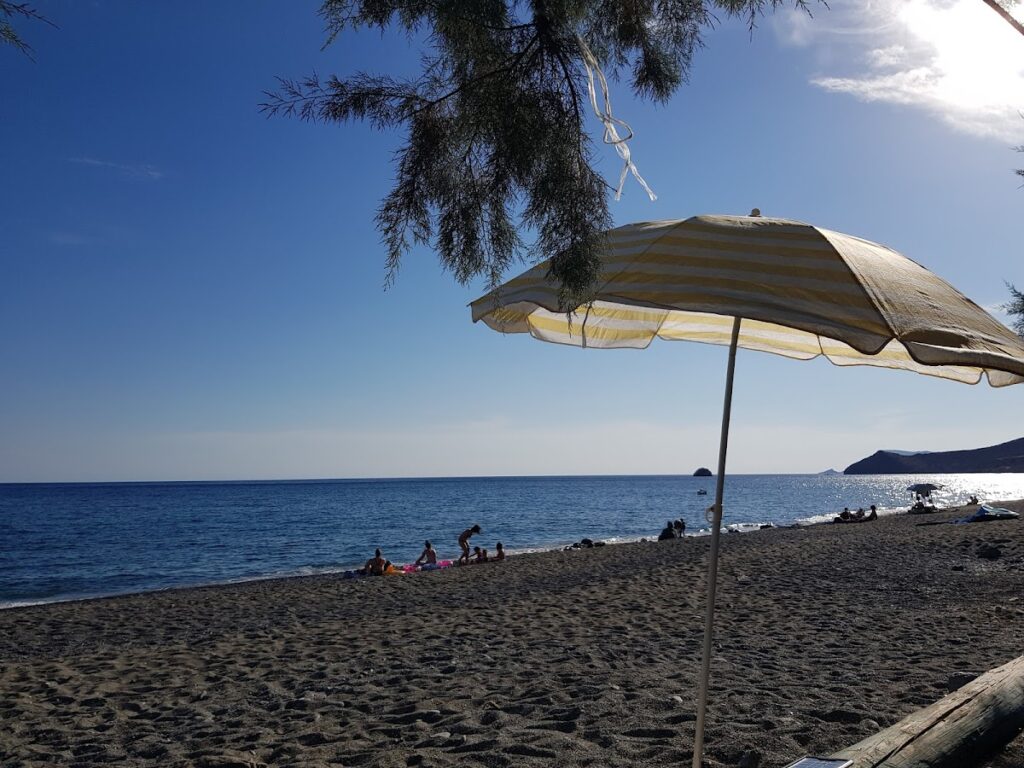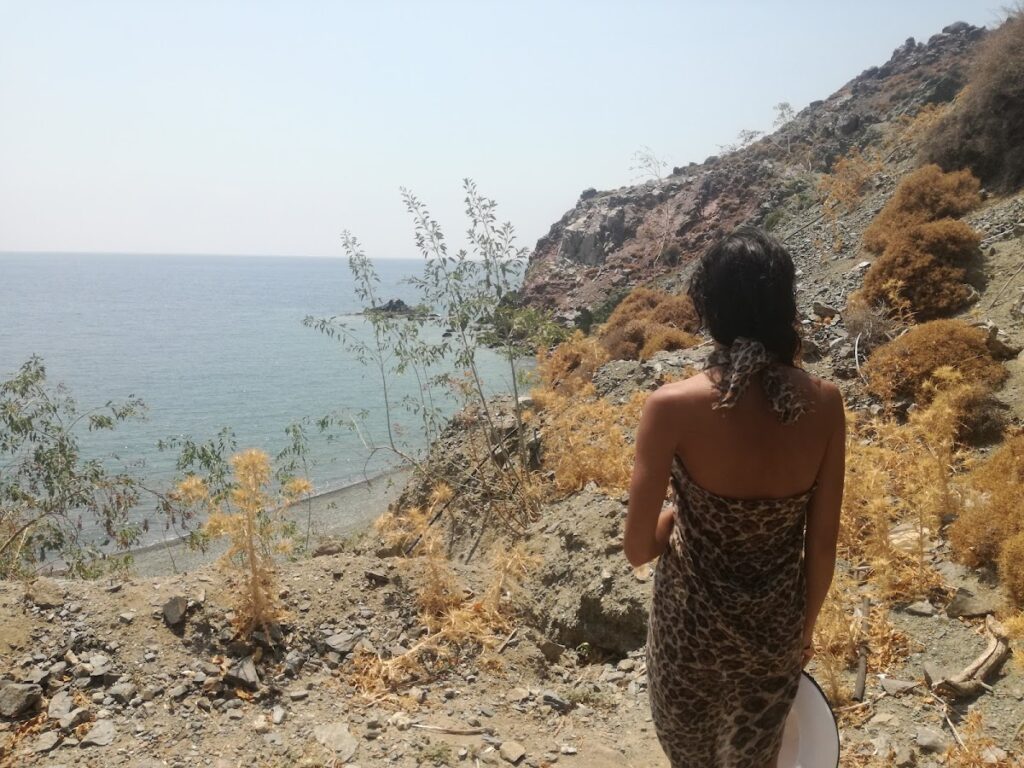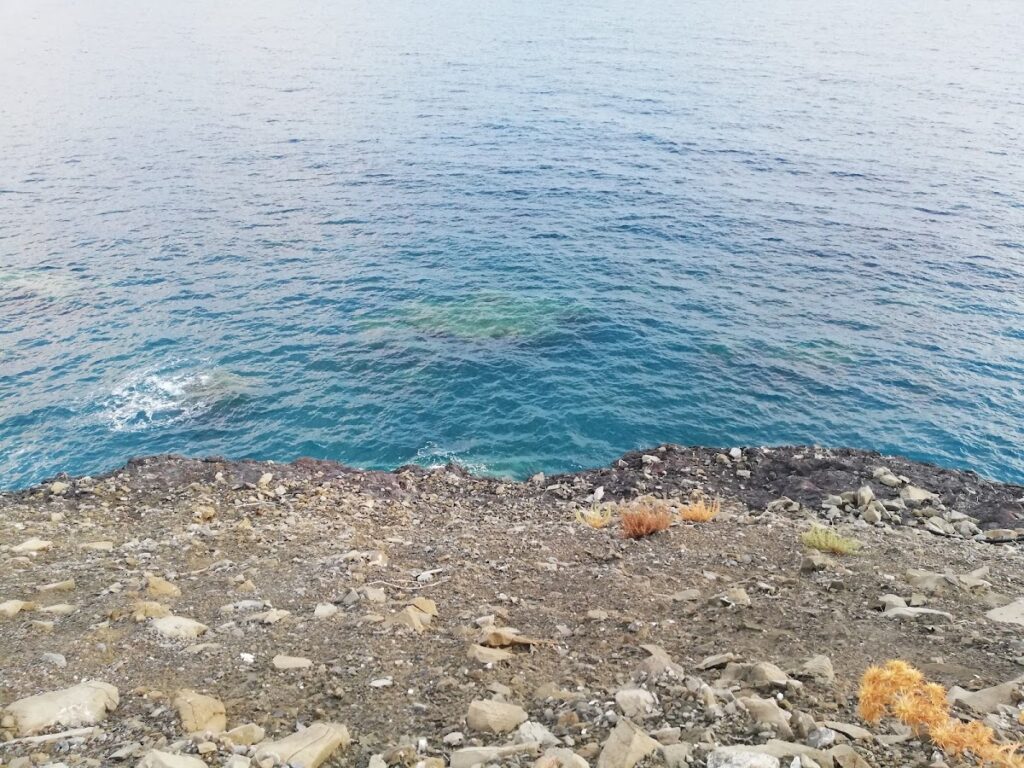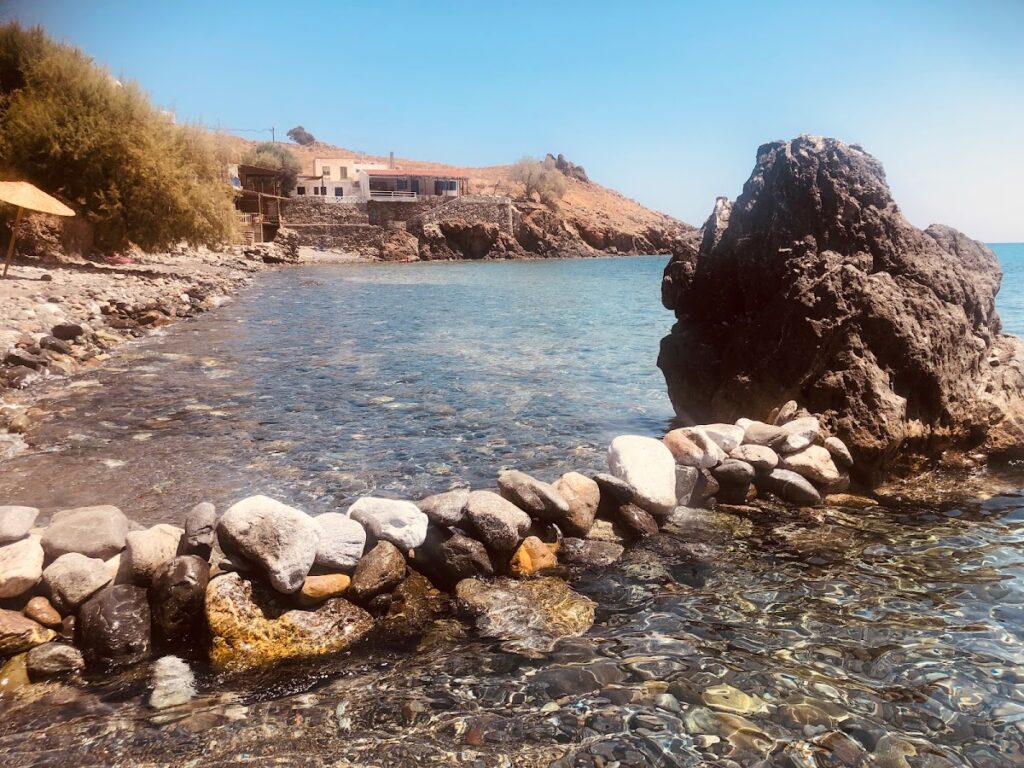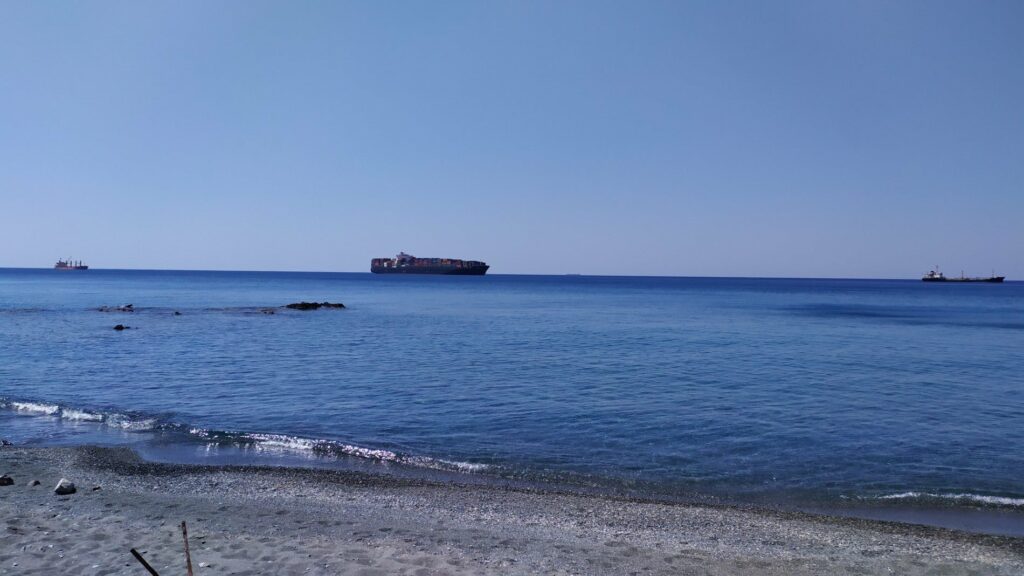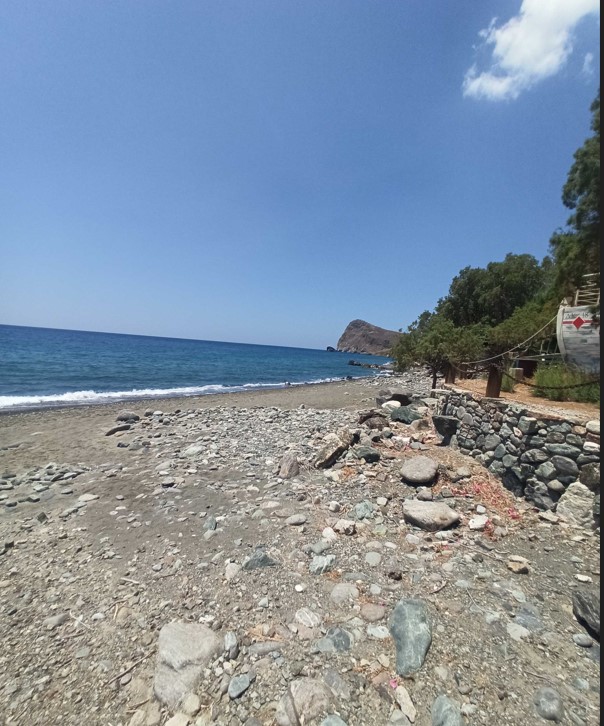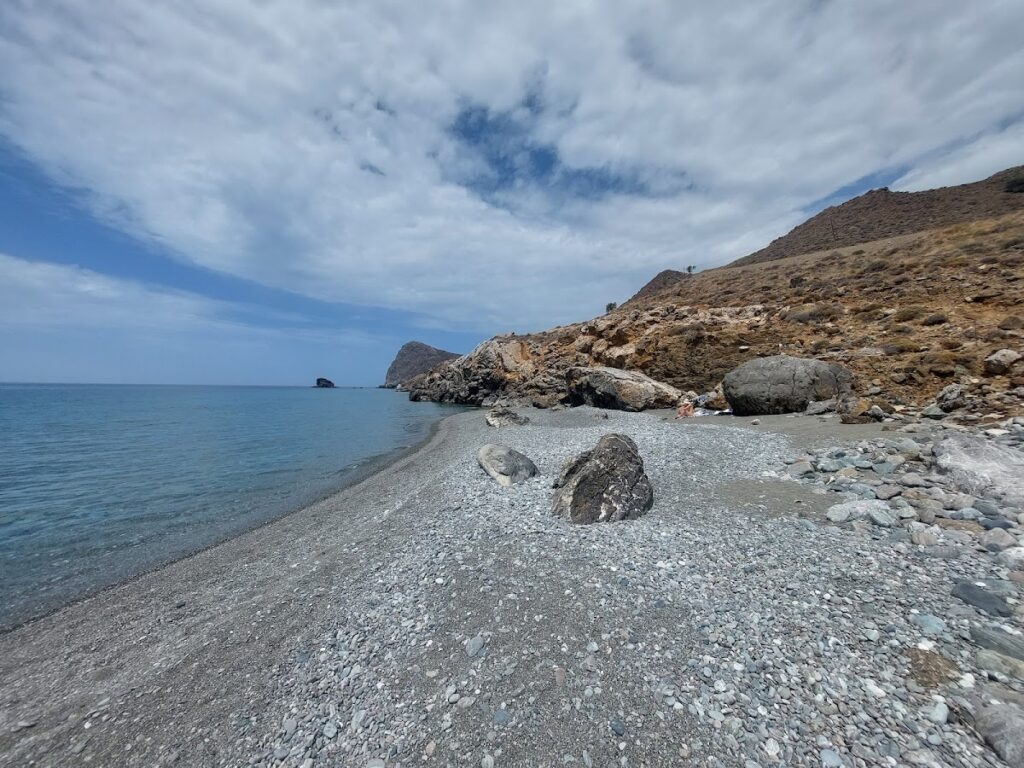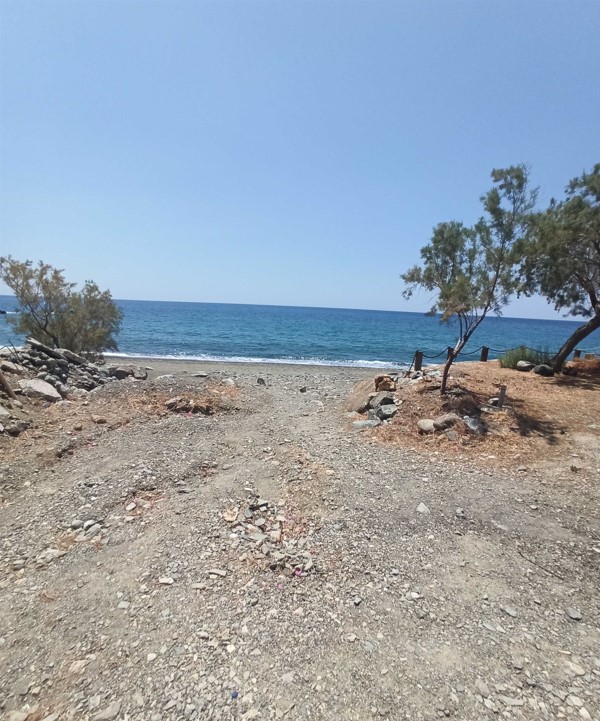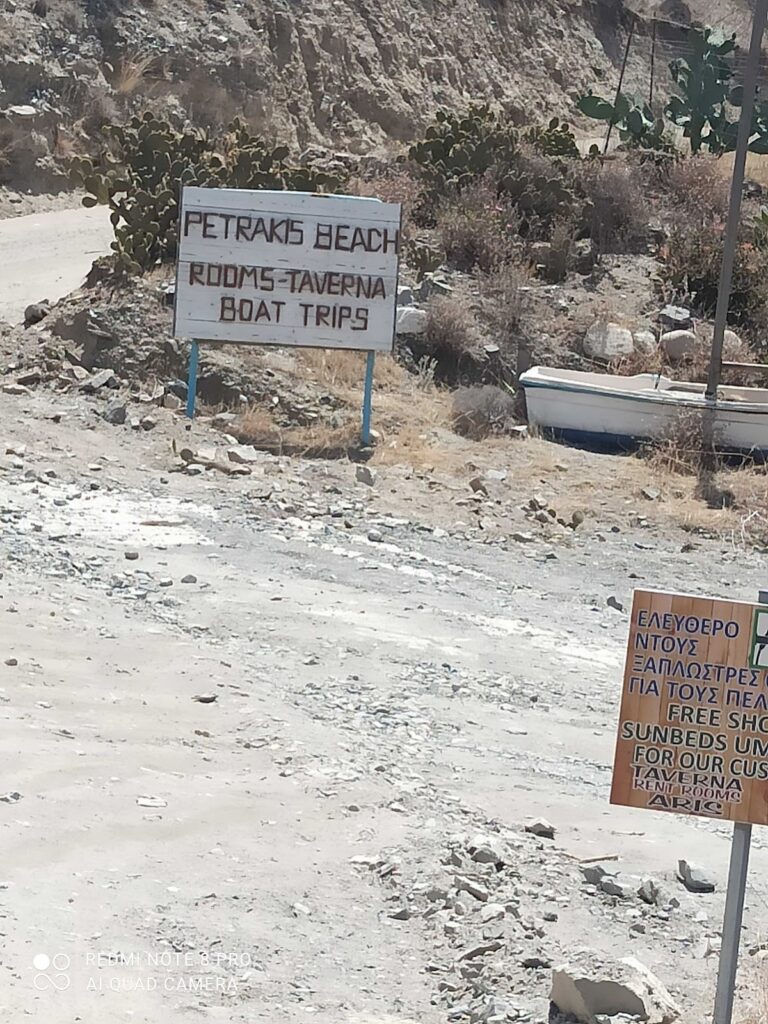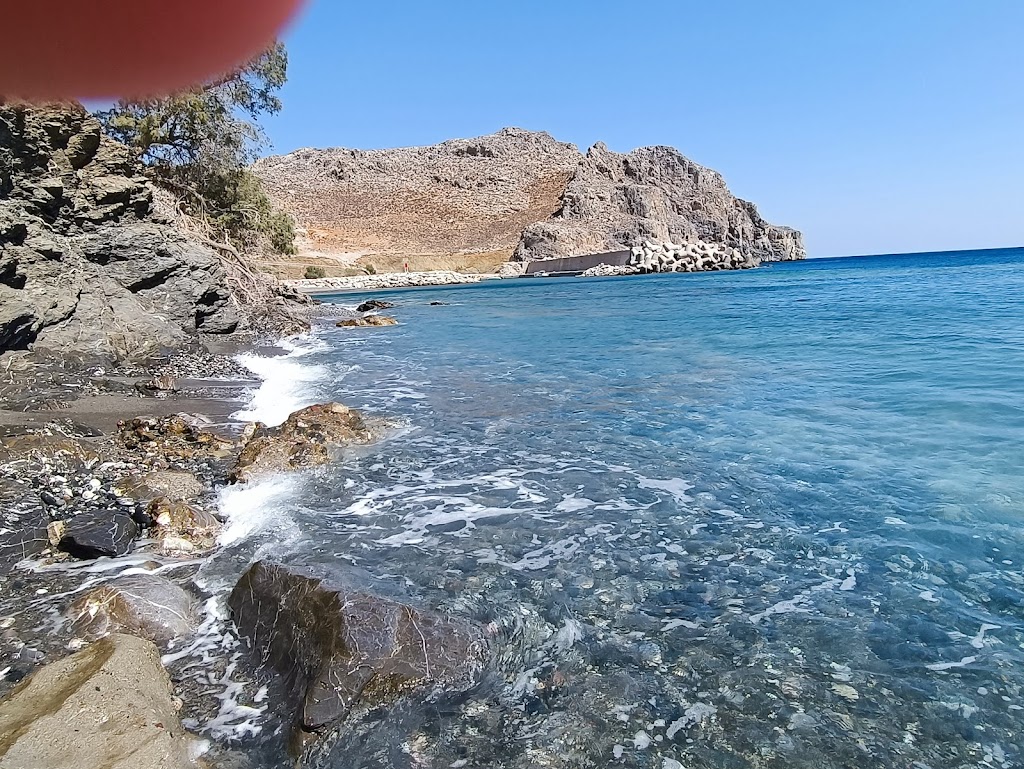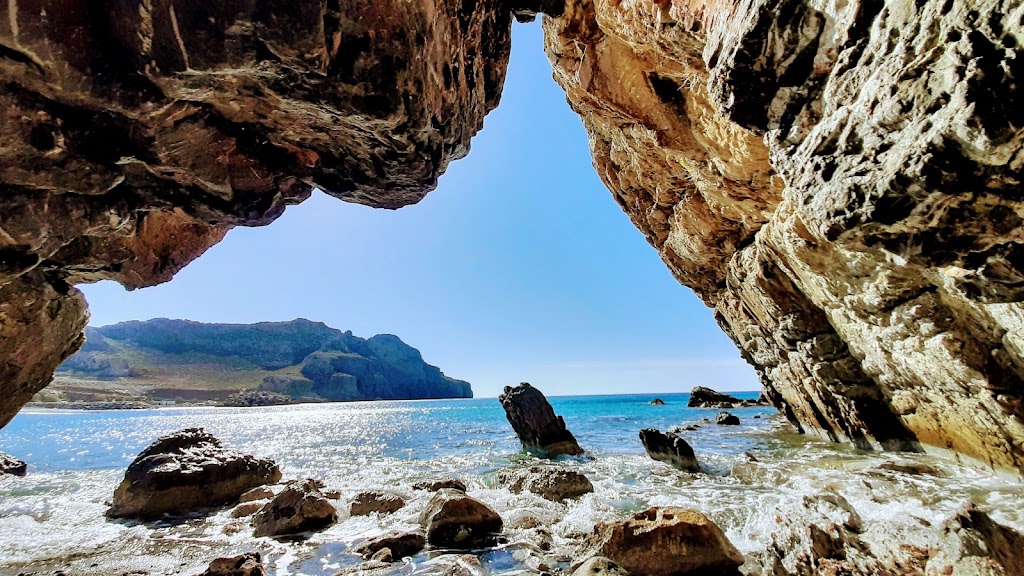Beaches near Andiskárion, in Heraklion region
Here is list of closest beaches to Andiskárion
- 2.9 km
- Psili Ammos beach - Heraklion
- Fine Pebbles, Sand
- Normal
- Blue
The longest beach in the region, Psili Ammos, is situated to the east of the village Platia Peramata. This secluded and stunning beach does not cater well to camping due to the lack of tree shade. Still, at the eastern extremity, one can find large white rocks known as Asproharaki, which provide shade to those fortunate enough to claim them. The beach was thrust into prominence in 2010 when a significant Russian oil tanker was stranded there during a storm. Thankfully, no one was at risk and no environmental harm was done.
Paliomandra beach
On your way to Psili Ammos from Tsigounas, you will encounter several minor beaches. The furthest east cove, reachable via a dirt road, is known as Paliomandra and is rather secluded. The beach features coarse sand and a rocky seabed, making it ideal for fishing and snorkeling.
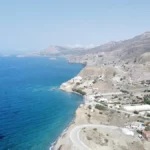
- 3.1 km
- Platia Peramata beach
- Fine Pebbles, Pebbles
- Shallow
- Blue
Platia Peramata, a quaint village situated 69km south of Heraklion and 7km east of both Kali Limenes and Lendas, nestles at the exit of a small, fertile valley that cuts through the rugged Asterousia Mountains. This valley begins at Antiskari village and concludes in a settlement, its rich soil used for growing early vegetables like tomatoes, cucumbers, and peppers in greenhouses due to the consistently high temperatures.
The region features numerous adjacent bays that form serene and picturesque beaches, frequented primarily by locals. At the heart of the settlement lies the small beach of Platia Peramata, known for its fine pebbles which are predominantly used to moor the locals’ boats. Despite the beach’s lack of extensive facilities, a handful of tavernas and rooms are available nearby. Tamarisk trees line the beach and are often used as camping spots. To the east of the settlement, East Platia Peramata beach, less favored by swimmers, offers another pebbly shoreline.

- 3.3 km
- Tsigounas beach
- Fine Pebbles
- Normal
- Blue
To the west of Lendas, you’ll encounter the quaint village of Tsigounas, which is home to the modest beach of Limanaki that serves as a local harbour due to its safeguarded orientation. The village of Tsigounas derives its name from the term ‘tsigounis’, meaning ‘stingy’, which is a reference to a local spring that produces a limited amount of water.
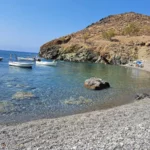
- 3.7 km
- Krigi beach
- Fine Pebbles
- Normal
- Blue
To the west of the village of Platia Peramata, you’ll discover the humble settlement known as Krigioi, with its array of unlawfully constructed homes and cottages. A brief drive along the local stream leads you to a stunning beach adorned with fine pebbles and crystal clear water. The uniqueness of Krigi lies in its numerous miniature beaches that stretch along the coast to Platia Peramata and the awe-inspiring soft limestone formations.
Overlooking Krigi is the quaint chapel of Saint Demetrius. To its west, you will find another secluded pebbly beach, Aspros Harakas, or White Rock, named for the pale rocks at its western end. However, Aspros Harakas may not appeal to everyone as it can only be reached by boat, boasts large stones and lacks shade.
Venturing further westward, you’ll stumble upon the three consecutive beaches of Kokkines Plakes, or Red Rocks. True to their name, these beaches are surrounded by reddish rocks and are primarily accessible via the sea.

- 4.3 km
- Dyskos beach
- Fine Pebbles
- Normal
- Blue
Situated 75km southwest of Heraklion, Dyskos, also known as Dytikos, is just a stone’s throw away from Lendas, separated only by the renowned Cape Lion. The legend says that Lion was one of the lions that served the goddess Rhea and was turned to stone at this location.
The settlement of Dyskos is nestled just west of Lion, where a sprawling beach with fine pebbles stretches out all the way to the village of Tsigounas. To reach this spot, one must travel the paved road from Lendas in the direction of Gerokambos. About a kilometer past Lendas, the beach will come into view on the left. In the absence of a car, one can still get to Dyskos by following the brief trail that skirts Cape Lion.
The eastern section of the beach, which lies in front of the village, is moderately developed with a handful of taverns and accommodation options. As one ventures westward, the beach becomes more secluded. The western area, close to Gerokambos, is particularly favored by nudists. In the past, Dyskos was a popular destination for hippies. For those seeking respite from the sun, numerous tamarisk trees line the beach providing ample shade.
Dyskos is also well-known for its breathtaking sunsets, with the sun disappearing behind the wild Asterousia mountains.

- 4.6 km
- Maha beach
- Fine Pebbles
- Deep
- Deep blue
Just about 1km eastward from the Chrysostomos settlement, you’ll come across the stunning Maha beaches. The first beach, primarily used as a harbour, is rocky and unorganized. However, there are a few rooms and a tavern in close proximity, with a road that leads right to the beach. If you continue to follow the dirt pathway that runs parallel to the beach towards the east, you’ll discover another breathtaking beach after about 100m. This beach boasts fine pebbles and deep, crystal blue waters. Although there are no trees to offer shade, there’s a cave on the eastern side of the beach that provides some respite from the sun. Do note that camping is prohibited here, as indicated by the signs scattered around the area.
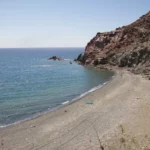
- 5.0 km
- Lendas beach
- Fine Pebbles, Sand
- Shallow
- Blue
Situated 74km south of Heraklion, on the southern fringes of the grand Asterousia Mountains, is the isolated seaside village of Lendas. This modestly designed tourist resort promises a serene vacation. The journey to Lendas, from Agii Deka near Mires town, via the village of Miamou, is via a narrow paved road that winds through the rough mountains, descending from an elevation of about 1000m to sea level, offering an awe-inspiring view of the Lendas sea.
The vicinity is scattered with beaches, popular among naturists. The beach in the village of Lendas, shielded on the east by Cape Psamidomouri and on the west by the renowned Cape Lion, was once the old port of Lendas, which has since been relocated to Loutra. This beach is the busiest in the area with basic amenities such as umbrellas, showers, sunbeds, and water sports. Beyond the beach, numerous taverns and rental rooms are available. The beach’s trademark is its ducks that wander freely. Additionally, the endangered loggerhead sea turtle lays its eggs on Lendas beach between May and September. For those seeking solitude, the secluded beaches of Dyskos and Loutra are ideal.
Lendas is established on the site of the ancient city Levina, a name believed to be derived from the Phoenician “Lavi” meaning Lion. A lion-like cape located west of the village supports this belief. Legend says this lion was one of the lions pulling goddess Rhea’s chariot and was turned into stone at this location. Another theory suggests the name originates from the Phoenician word “levina”, meaning white, describing the whitish hue of the local rocks. The modern name Lendas is derived from the Greek word “Leondas” meaning lion. This cape, also known as Lion, is an archaeological site that can be visited by a short 15-minute walk to its peak, where you can enjoy a beautiful sunset. Archaeologists have uncovered evidence of early Minoan graves and a settlement, which had ties with Egypt. The ancient city of Levina prospered in the Hellenistic and Roman era, serving as a port for Gortys, the most powerful town in Crete at the time.
East of Lentas, a spring with supposed healing properties can be found. Even today, studies suggest the water aids in healing stomach, blood, and bleeding disorders. Consequently, a massive temple dedicated to the divine doctor Asclepius and Hygeia Sotira was built in the 4th century AC. This temple gained fame as a center for hydrotherapy, physiotherapy, and psychiatry, attracting patients from distant places, such as Libya. Remnants of the temple, a Byzantine church dedicated to Agios Ioannis Theologos, and Roman baths can still be found in the area. Levina was presumably abandoned in the 7th-8th century due to frequent pirate attacks.
East of the village, opposite the Psamidomouri Cape, a rock resembling a crouching elephant can be seen, with another beach formed opposite the rock. Further on, Cape Trafoulas bears a resemblance to a crocodile from Lendas. According to a local legend, Cleopatra once visited Lendas with her favorite animals, namely a lion, a crocodile, and an elephant. She was so enchanted by the place that she left her animals behind when she returned to Egypt. To this day, these “animals” remain there, patiently waiting for Cleopatra’s return.
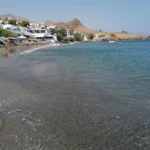
- 5.5 km
- Lassea beach
- Fine Pebbles, Sand
- Normal
- Blue
Chrysostomos, a quaint seaside hamlet, is situated 75km to the south of Heraklion and 3km to the east of Kali Limenes. This small community features a few local taverns, a mini market, and available lodging. It takes its name from the decaying church of Saint John Chrysostomos located on the eastern side of the settlement. Chrysostomos is established on the ancient city of Lassea’s site, which Saint Paul visited during his time on Crete. Lassea served as a port for the Roman city Gortys, the then capital of Crete and Libya in the Roman era, and was rich in copper resources.
Lassea’s beach, in front of the village, is a picturesque spot featuring coarse sand and shelter from westerly winds. It’s not commercialized, but is conveniently close to the village. On the beach’s western edge, a rocky outcrop extends towards the small islet of Trafos, marking the ancient port of Lassea’s old pier. These rocks have been there since the 1960s, when they were used to construct the Oil Tanks of Kali Limenes. The ancient town of Lasea’s remnants are still visible on the beach and the islet. The beach extends beyond Trafos to the west, forming a separate beach known as Segrezo Ryaki that faces westward. This beach is proximate to a Roman cemetery and is secluded, ideal for nudists, but has more rocks than the main beach. At the westernmost point, there’s a freshwater spring.
To get here from Kali Limenes, take the paved road that begins 1km east of Kali Limenes and head east towards Platia Peramata. After about 2km, you will encounter the village of Chrysostomos on your right.
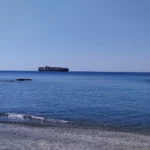
- 5.9 km
- Petrakis beach
- Pebbles
- Normal
- Blue
East Tsigounas, also known as Petrakis, is a serene beach situated 1km east of Lendas and 76km south of Heraklion on the foot of the rugged slopes of the Asterousia Mountains. The beach can be reached by car from Lendas via a road leading east to the local port. A section of it is referred to as Ostria, named after a small local hotel.
East Tsigounas is home to a quaint hamlet comprising 2-3 taverns with rooms and a handful of houses. The hamlet overlooks a lengthy beach adorned with beautiful round pebbles. Tamarisk trees line the beach, providing shade and an ideal spot for camping. Despite not being well-developed, the beach does offer a few umbrellas provided by the taverns.

- 7.0 km
- Loutra beach
- Fine Pebbles, Sand
- Normal
- Blue
Located just 3km to the east of the coastal village of Lendas, and 77km to the south of Heraklion, you’ll find Loutra. Known to locals as the home of the Lendas port, it’s safeguarded on the eastern side by Cape Trafoulas. Adjacent to the harbour, there are several coves with sandy and rocky sea beds, perfect for snorkelling and fishing. Although it’s relatively unorganised and not overly busy, there are a few nearby restaurants and rental rooms. Before the construction of Lendas’ port, Loutra was a favourite amongst naturists, but these days they tend to feel less at ease here.
West of the main beach and detached from the harbour is a small beach known as “Pasiphae’s Baths” or Hammam. Legend has it that this beach was the bathing place of choice for females, led by Queen Pasiphae, wife of the mythical King of Knossos, Minos. Minos and his male counterparts, however, would typically be found at Trafoulas beach.
Close by Loutra, there’s the charming Panaghia (Virgin Mary) Vithanos chapel, which is uniquely built into a rock. According to local folklore, a shepherd found a Panaghia icon in the rocks above Loutra near the canyon. After the icon was stolen from a church in the Plain of Mesara and went missing, the shepherd re-discovered it in the same spot. To express their gratitude for this miracle, the shepherd and his companions decided to construct a church at this site. They were faced with the difficult task of bringing water up from the valley, a task made possible by Panaghia who created a spring from the barren rock. This is the reason the church’s icons depict Panaghia surrounded by water.
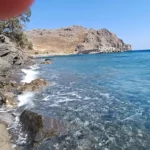
There are no results matching your search.
Reset